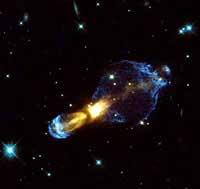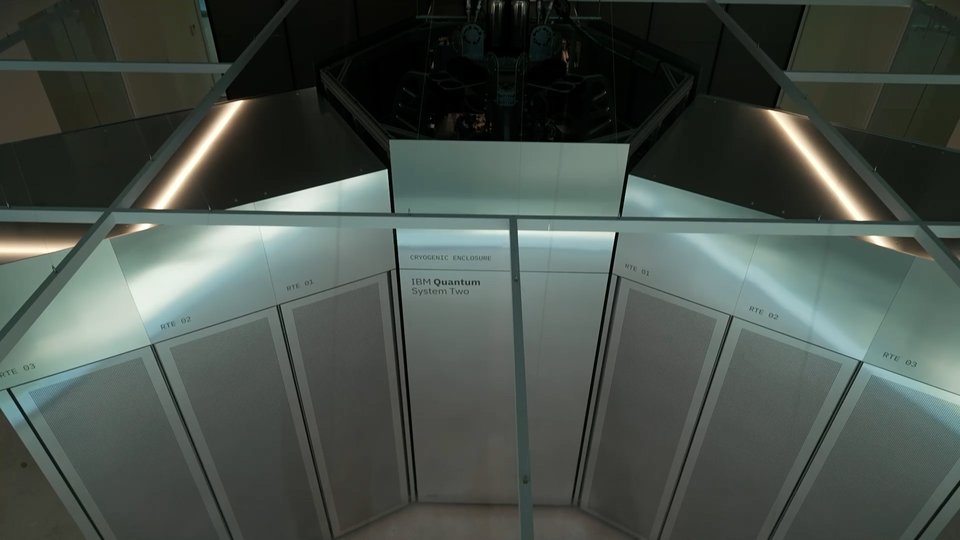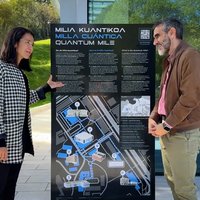Death of the Sun in sight
5,000 million years is now becoming the star OH231.8+4.2. The Hubble telescope has taken a spectacular photograph of the phenomenon and astronomers have been able to verify what they knew theoretically.
Sequence of the death of stars with a mass similar to the Sun: after consuming all the hydrogen, the forces that kept the size of the star stable become unbalanced, the star increases in size and becomes a red giant. At the same time, the core begins to contract and the outer layers of the star are thrown into space in the form of gas jet. This last process is perfectly visible in the photo of the Hubble telescope.

Gas jets look yellow. They leave on both sides of the star at a speed of one and a half kilometers per hour and the process is so effective that most of the star's mass is found in this bipolar structure. At this rate there are supersonic shocks and shock fronts. As a result, the surrounding gas is heated. The image shows in blue the hydrogen produced from these fronts and the light emitted by the nitrogen ions.
The structures so well seen in photography so far were only known theoretically. This is the first time they have been seen in the photo and astronomers are fascinated. The photo was taken by Hubble before Christmas 2000 and worked with Spanish and American astronomers.
The system OH231.8+4.2, by its shape, is called pumpkin nebula and by its components, rotten egg. And there are many compounds with sulfur, and if in space it could smell, its smell would be enormous.
The Kalabaza nebula is 5 billion light years away in the constellation of Puppis.
More information:
European Space Agency
Buletina
Bidali zure helbide elektronikoa eta jaso asteroko buletina zure sarrera-ontzian










